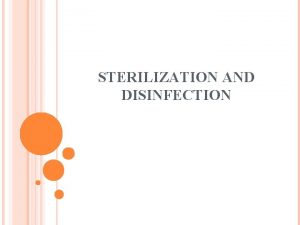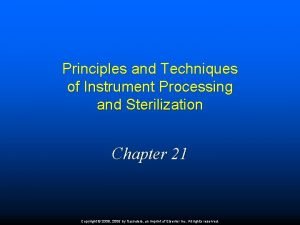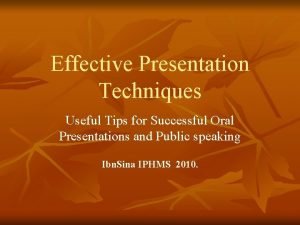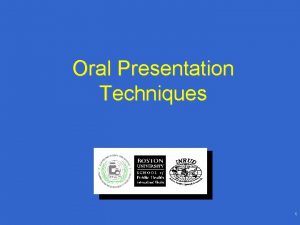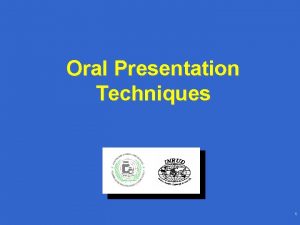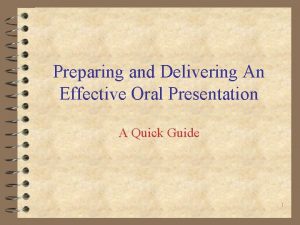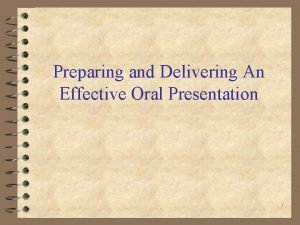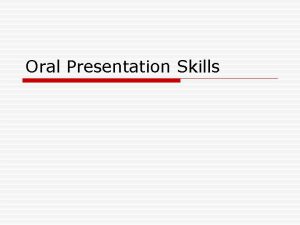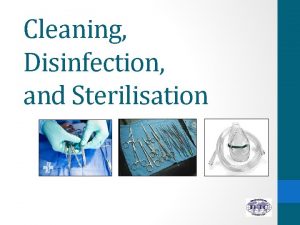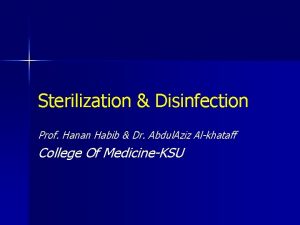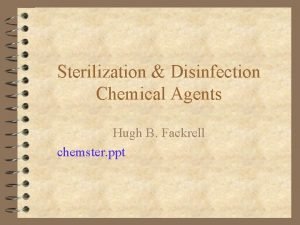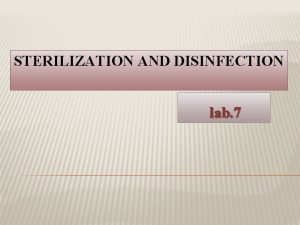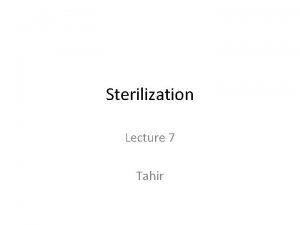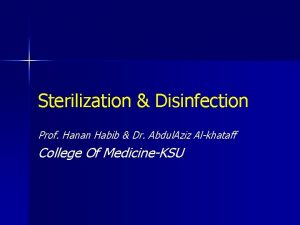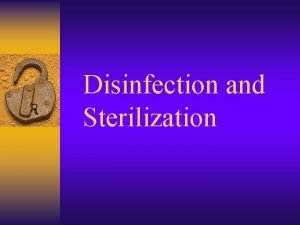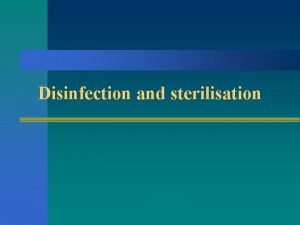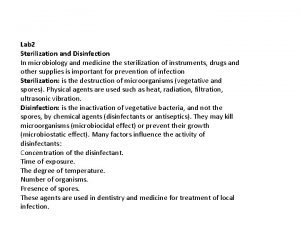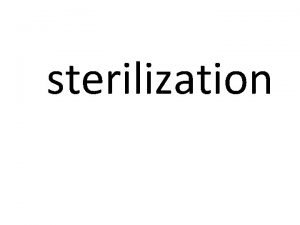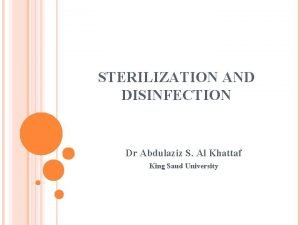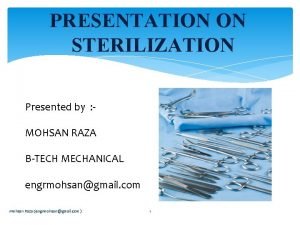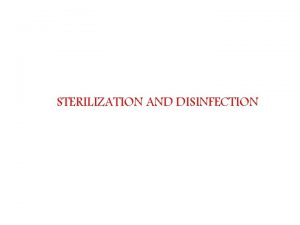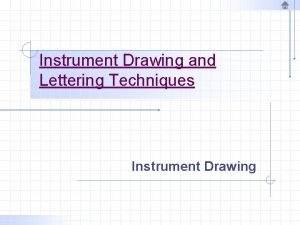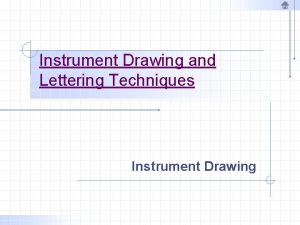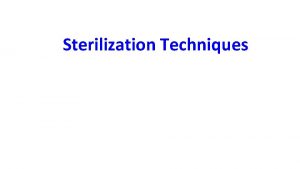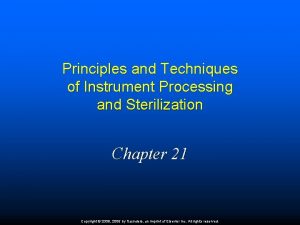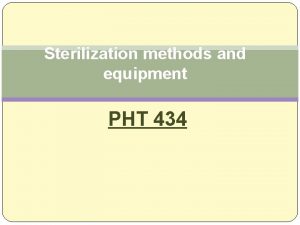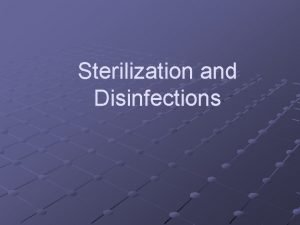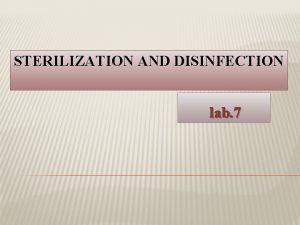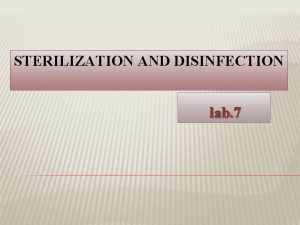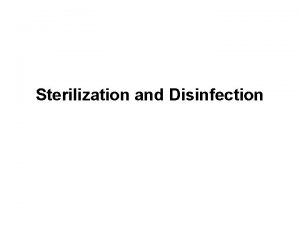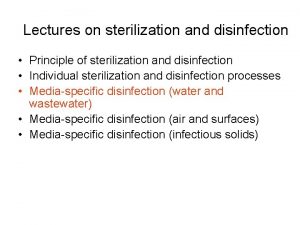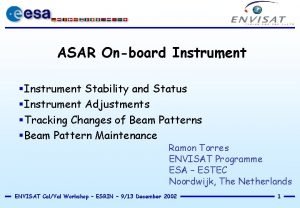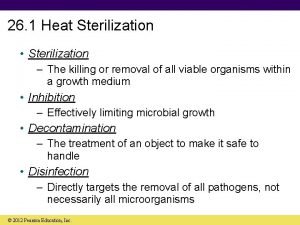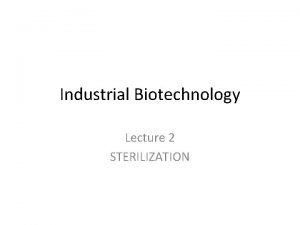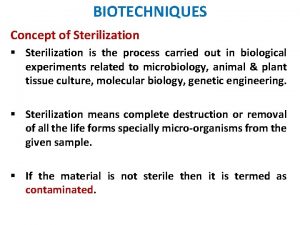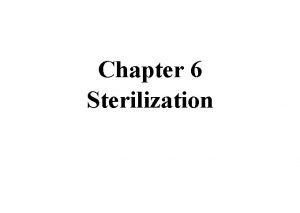Techniques of instrument sterilization Department of Oral and

























- Slides: 25

Techniques of instrument sterilization Department of Oral and Maxillofacial Surgery Dentistry Explorer

Contents: • DEFINITION OF STERILIZATION AND DISINFECTION • TYPES OF DISINFECTION • TECHNIQUES OF STERILIZATION • CONCLUSION • REFERENCES Dentistry Explorer

Definitions : • STERILIZATION: – Use of a physical or chemical procedure – to destroy all microorganisms including substantial numbers of resistant bacterial spores. – Destruction of all life forms. – The process of killing or removing all viable organisms. Dentistry Explorer

DISINFECTION: • Destruction of pathogenic and other kinds of microorganisms by physical or chemical means. • Disinfection is less lethal than sterilization • Disinfection is a process of removing or killing most, but not all, viable organisms. Dentistry Explorer

Types of Disinfection : High level disinfection • Complete elimination of all microorganisms in or on an instrument except for small numbers of bacterial spores Intermediate level disinfection • Might be cidal for mycobacteria, vegetative bacteria, most viruses and most fungi but do not necessarily kill bacterial spores Low level disinfection • Can kill most vegetative bacteria, some fungi and some viruses Dentistry Explorer

DISINFECTANT EXPOSURE TIME ACTIVITY LEVEL Formaldehyde 30 minutes or more Intermediate (If used with alcohols for 4 hrs above room temperature then high level) Glutaraldehyde 10 minutes or more Chlorine compounds 30 minutes or more Intermediate Iodophors 30 minutes or more Intermediate Alcohol compounds 10 minutes or more Intermediate Ref: Tucker, M. , Ellis III, E. , Hupp, J. 2009. Contemporary Oral And Maxillofacial Surgery (5 th edition pg. 65). India: Elsevier Dentistry Explorer

ULTRASONIC CLEANERS AND SOLUTIONS • An ultrasonic cleaner uses sound waves, that are outside the human hearing range to form oscillating bubbles, a process called cavitation. • These bubbles act on debris to remove it from the instruments. • It is the safest and most efficient way to clean sharp instruments. • cleaning solutions as recommended by ultrasonic device manufacturers are used. • Operate the ultrasonic cleaner for 3 -6 minutes for loose instruments 10 -20 Dentistry Explorer mins for cassettes or longer

INSTRUMENT WASHER • Instrument washers use high-velocity hot water and a detergent to clean instruments. • These devices require personnel to either place instruments in a basket or to use instrument cassettes during the cleaning and drying cycles. • Resmebles a kitchen dishwasher Dentistry Explorer

Agents used in sterilization Physical agents: Chemical agents: 1. Sunlight 2. Dry heat: flaming, incineration, hot air 3. Moist heat: pasteurization, boiling, steam under pressure, steam under normal pressure. 4. Filtration: candles, membranes 5. Radiation 6. Ultrasonic and sonic vibrations 1. Alcohols: ethyl, isopropyl, trichlorobutanol 2. Aldehydes: formaldehyde, glutaraldehyde 3. Halogens 4. Phenols 5. Surface-active agents 6. Metallic salts 7. Gases: ethylene oxide, formaldehyde, beta propiolactone. Dentistry Explorer

Stages for instrument sterilization: • Presoaking sterilization • Cleaning • Corrosion control and lubrication • Packaging • Sterilization • Handling sterile instruments • Storage • Distribution Dentistry Explorer

Methods of Sterilization • Steam pressure sterilization (autoclave) • Chemical vapor pressure sterilization (chemiclave) • Dry heat sterilization (dryclave) • Ethylene oxide sterilization Dentistry Explorer

Autoclave • It is a pressure chamber which is filled with hot steam under pressure • Preferred method of sterilization unless material is damaged by heat, moisture, or high pressure • All vegetative forms and spores are killed within 15 -20 minutes at 121 degree celscius and 15 pounds of pressure per square inch • Moist heat coagulates cell proteins of the microorganisms and thus kills all the living entities (including spores). Dentistry Explorer

Types of Autoclave DOWNWARD DISPLACEMENT • Also known as Gravity displacement unit. • This is because of the method of air removal in the sterilization chamber. POSITIVE PRESSURE DISPLACEMENT • It’s an improvement over downward displacement autoclave. • Steam is created in a second, separate chamber and held until the proper amount to displace all of the air in the sterilization chamber is accumulated. • The steam is then released into the sterilization chamber in a pressurized blast, Explorer forcing the air out through the drain. Dentistry hole and starting the sterilization process

NEGATIVE PRESSURE DISPLACEMENT • 0 ne of the most accurate types of unit available • Once the sterilization chamber door is closed, a vacuum pump removes the air. • Steam is created in a second, separate chamber. • Once the air has been completely removed from the sterilization chamber, the steam is then released into the sterilization chamber in a pressurized blast much like that of a positive pressure displacement unit. • The negative pressure displacement unit is able to achieve a high "Sterility Assurance Level" (SAL), but the system can be quite large and costly. Dentistry Explorer

TRIPLE VACUUM AUTOCLAVE • A triple vacuum autoclave is set up/function in a similar fashion to a negative pressure displacement. • Unit is named triple vacuum because there are three process of removing the air and the steam’s pulse. Dentistry Explorer

CHEMICAL VAPOUR PRESSURE STERILIZATION (CHEMICLAVING) • Sterilization by chemical vapour such as formaldehyde under pressure 30 pounds and at 131 C for 20 minutes. • Works by destroying vital protein systems of microorganisms. • Advantages – Carbon steel and other carbon sensitive burs, instruments and pliers can be sterilized without rust or corrosion • Disadvantages – Items sensitive to elevated temperature will be damaged – Instruments must be very lightly packed Dentistry Explorer – Towel and heavy clothing cannot be sterilized.

Dentistry Explorer

DRY HEAT STERILIZATION • Technique: Placing instruments in oven, heating to 170 C, for 1 hour, and then cooling is from 2 -2. 5 hours • Practical way to sterilize needles, metals, glassware, heat resistant oils and waxes Dentistry Explorer

ETHYLENE OXIDE STERILIZATION • Highly inflammable gas and is mixed with carbondioxide or nitrogen to make it safer to use. • Its action is due to alkylating the amino, carboxyl, hydroxyl, sulphydrl groups in protein molecules and it also reacts with DNA and RNA • Especially used for sterilizing heart-lung machines, respirators, sutures, dental equipment, books and clothing. • Materials like glass, metal and paper surfaces, clothing, plastics, soil can be sterilized. Dentistry Explorer

�Advantages: �Disadvantages: 1. Operates effectively at low 1. Potentially mutagenic and temperatures 2. Gas is extremely penetrative carcinogenic. 2. Requires aeration chamber , cycle time lasts hours 3. Can be used for sensitive equipment like handpieces. 3. Usually only hospital based. 4. Sterilization is verifiable Dentistry Explorer

Gamma radiation • Benefits of Gamma Radiation include o precise dosing o rapid processing o uniform dose distribution o dosimetric release–the immediate availability of product after processing. • Penetrating Sterilization: Even with High-Density Products Gamma Radiation is a penetrating sterilant • Gamma Radiation kills microorganisms by attacking the DNA molecule Dentistry Explorer

Storage and care of sterilized instruments • Storage areas should be dust proof, dry, well ventilated and easily accessible for routine dental use. • Sterile materials should be stored atleast 8 -10 inches from the floor, atleast 18 inches from the ceiling, and atleast 2 inches from the outside walls. • Items should be positioned so that packaged items are not crushed, bent, compressed or punctured. Dentistry Explorer

Storage and care of sterilized instruments • Items are not stored in any location where they can become wet. • Outside shipping containers and corrugated cartons should not be used as containers in sterile storage areas. • Ultra violet chambers and formalin chambers are now commonly used for storage of instruments. Dentistry Explorer

Conclusion • Sterilization and disinfection are essential and mandatory in our day to day life for successful practice. • It is essential in all health care facilities to avoid spread of diseases • Utilization of proper sterilization, disinfectants and aspetic procedures help us achive safety for the patient as well as the health care professionals. Dentistry Explorer

REFERENCES: • Textbook of microbiology, sterilization and disinfection, 9 th edition, Ananthanarayan & Paniker’s • Grossman’s endodontic practice, 13 th edition, instrument sterilization • Sterilization and disinfection of dental instruments by ADA. • Contemporary Oral and Maxillofacial surgery, 5 th edition, James R. Hupp, Edward Ellis III, Myron R. Tucker Dentistry Explorer
 Tyndallization
Tyndallization Instrument processing
Instrument processing Examples of null type instruments
Examples of null type instruments Instrument cross check
Instrument cross check Effective oral presentation techniques
Effective oral presentation techniques Oral presentation techniques
Oral presentation techniques Presentation techniques
Presentation techniques Effective oral presentation techniques
Effective oral presentation techniques Effective oral presentation techniques
Effective oral presentation techniques Effective oral presentation techniques
Effective oral presentation techniques Low level disinfectant
Low level disinfectant Sterilization and disinfection
Sterilization and disinfection Sterilization and disinfection
Sterilization and disinfection Sterilization and disinfection
Sterilization and disinfection Role of nurse in sterilization and disinfection
Role of nurse in sterilization and disinfection What is batch sterilization
What is batch sterilization Advantage of autoclave
Advantage of autoclave Disinfection and sterilization
Disinfection and sterilization Tindalization
Tindalization Sterilization and disinfection in microbiology lab
Sterilization and disinfection in microbiology lab Hot air oven working principle
Hot air oven working principle Mechanical methods of sterilization
Mechanical methods of sterilization Autoclave ppt
Autoclave ppt Defination of sterilization
Defination of sterilization Autoclave principle
Autoclave principle What is sterelization
What is sterelization
